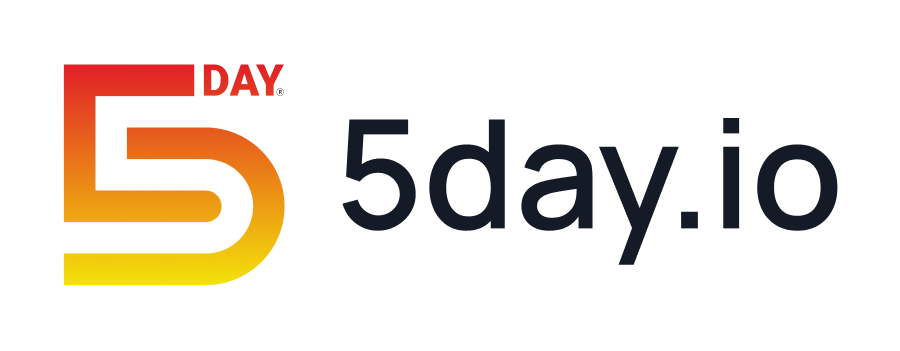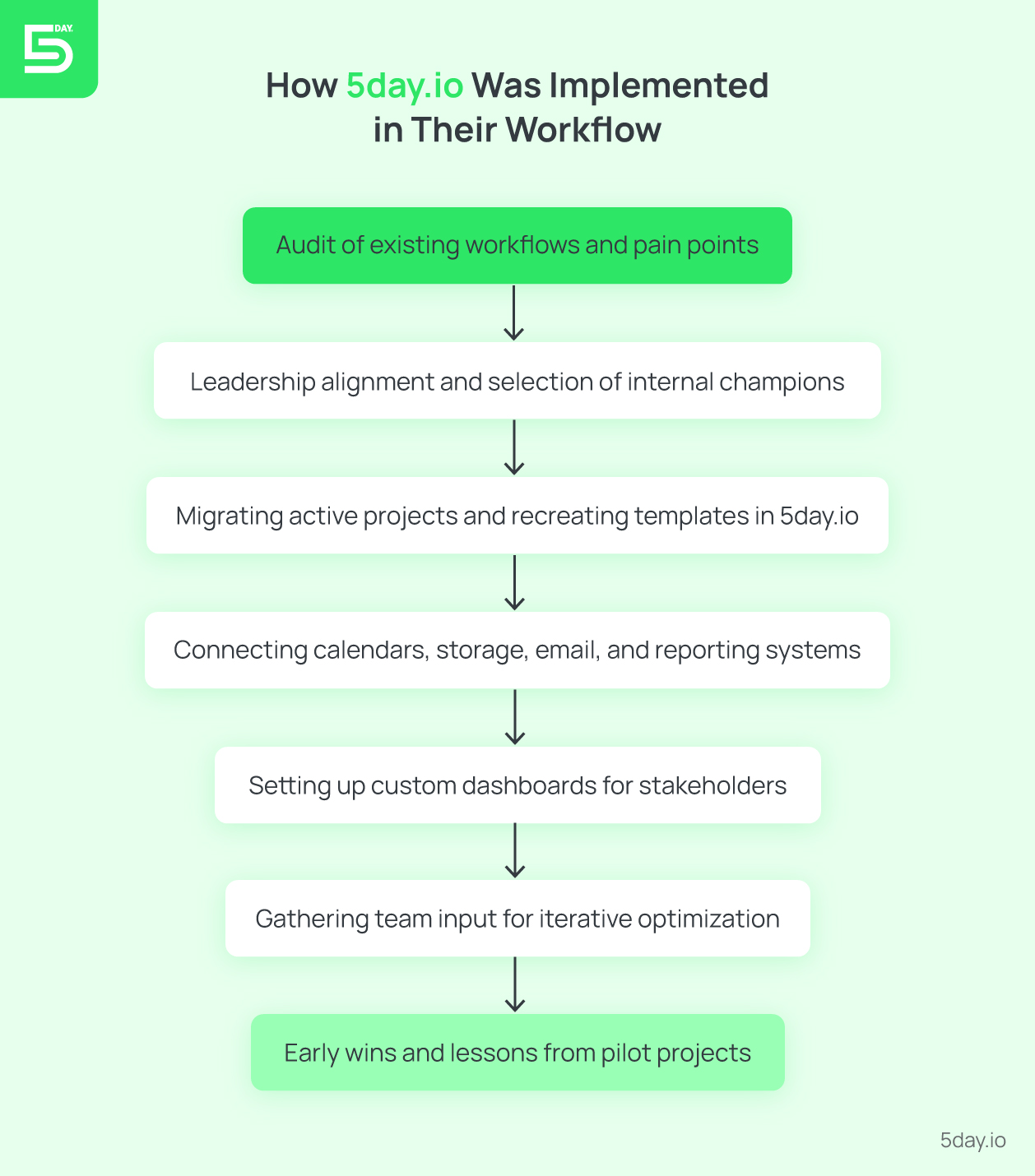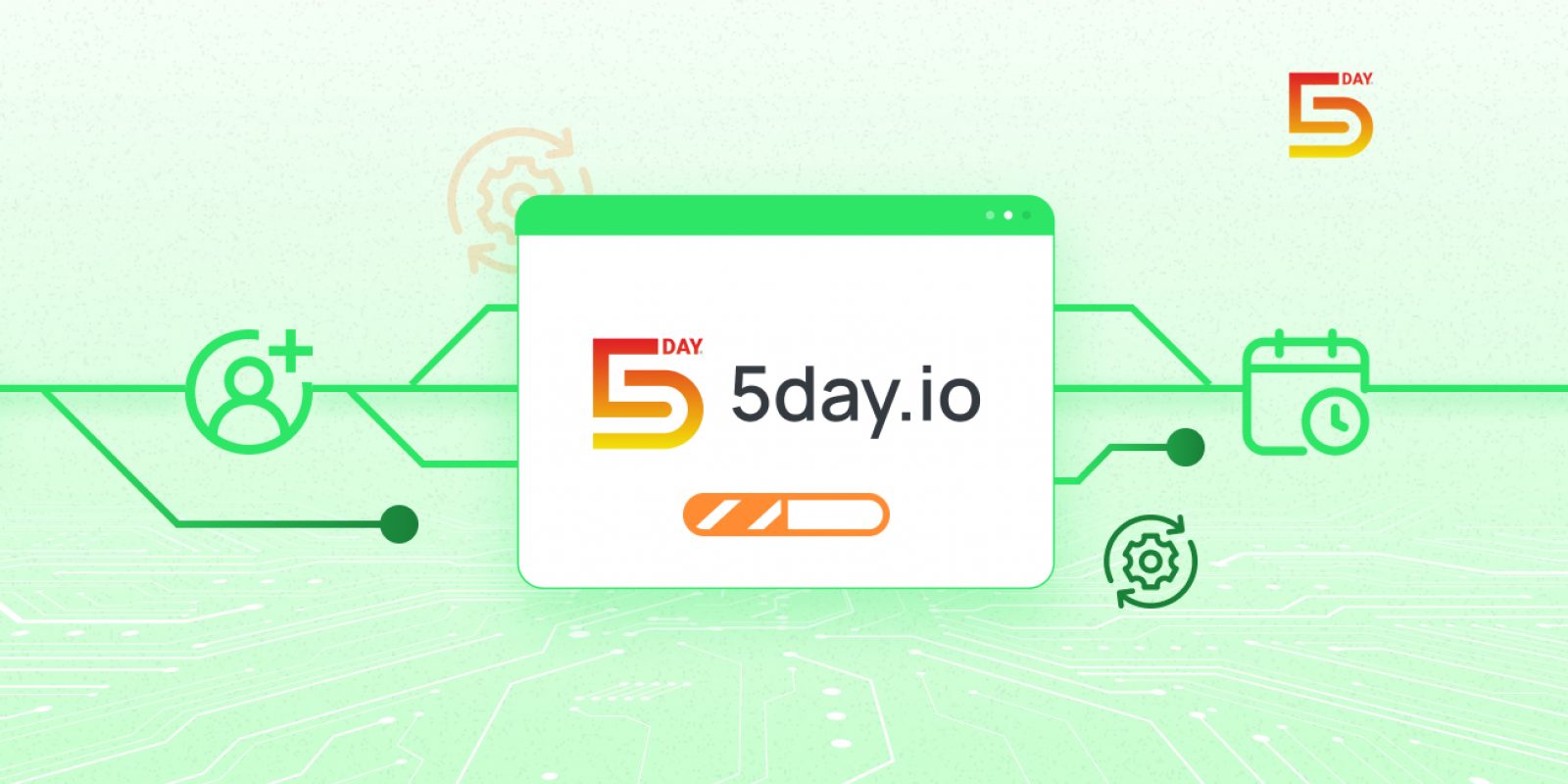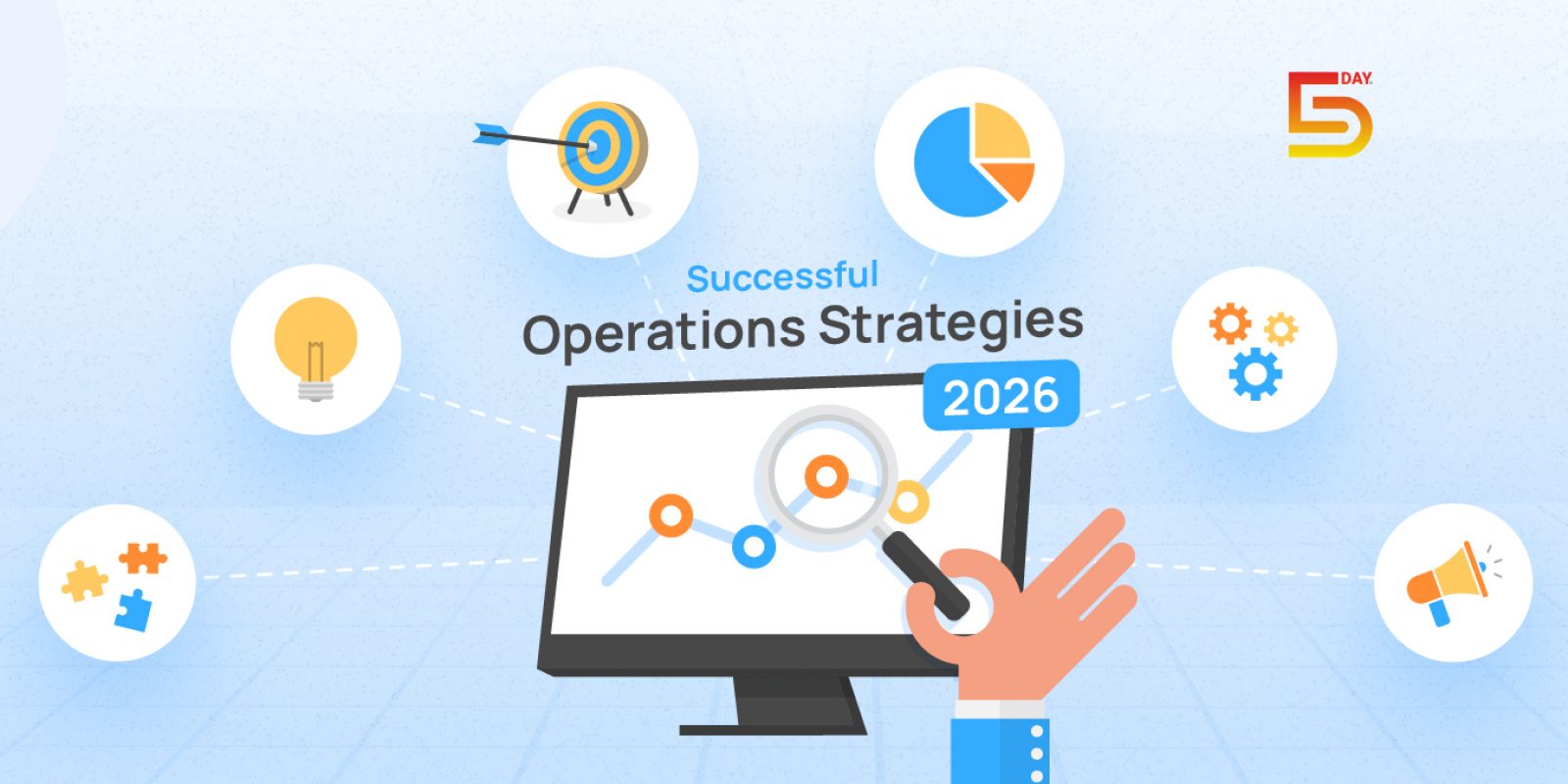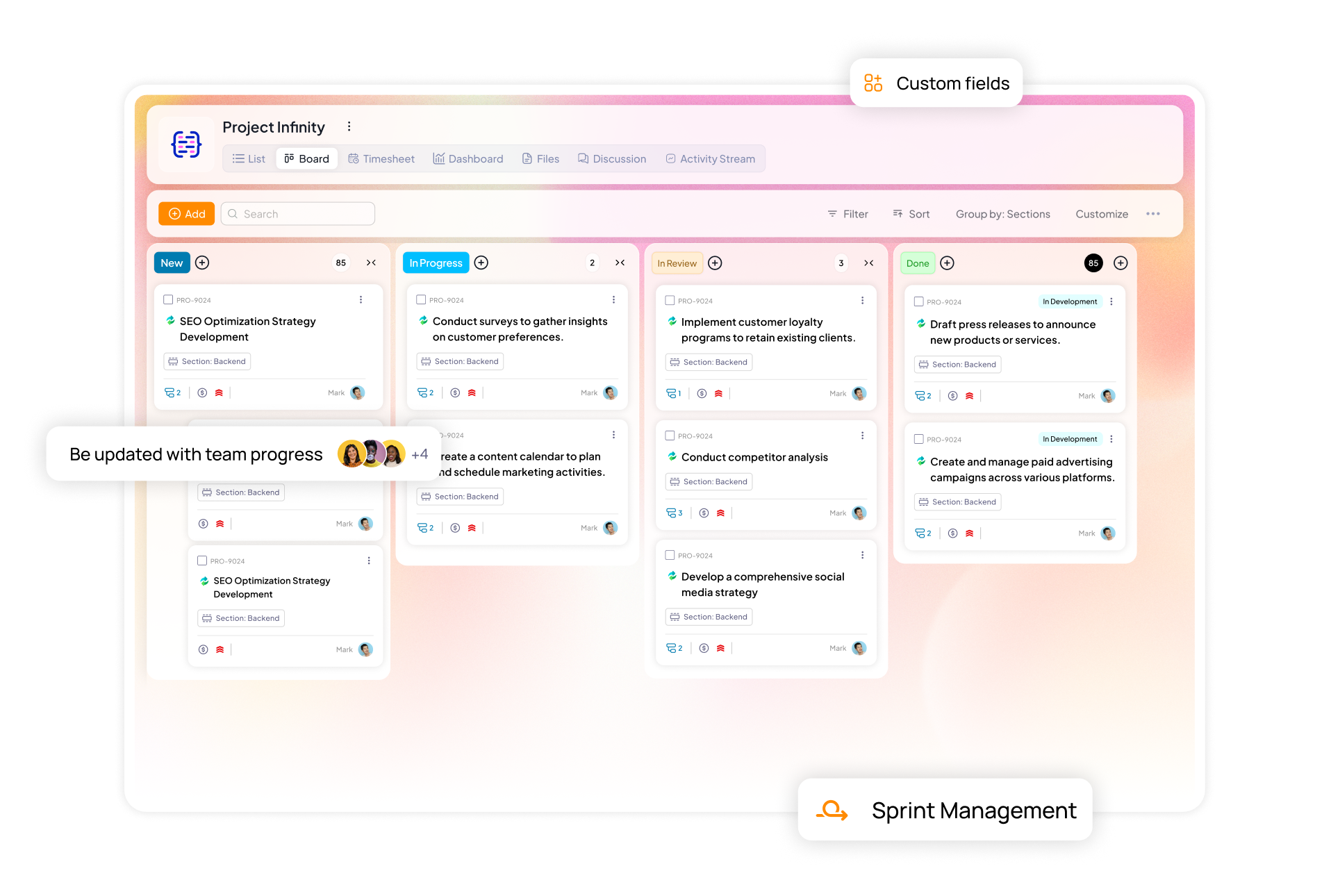Koffeetech had talent, and drive, but that wasn’t always enough. Campaigns kept getting more complex, and the pressure to deliver never really let up.
The team was pouring in everything they had, yet it often felt like they were just treading water. They wanted to do more, to grow bigger, but not at the cost of burning out the very people who made the agency special.
Something had to give.
And then it did.
When Koffeetech brought in 5day.io, everything started to change. It was like lifting a weight off the team’s shoulders. Projects felt smoother, and people finally had the focus to do the kind of creative work they loved. For the first time in a long time, the team was actually enjoying the process again.
Clients felt the difference too. They got clarity, and work delivered with precision. In this project management case study, we’ll see Koffeetech’s lived experience before vs after bringing in 5day.io.
The problems faced by them before 5day.io
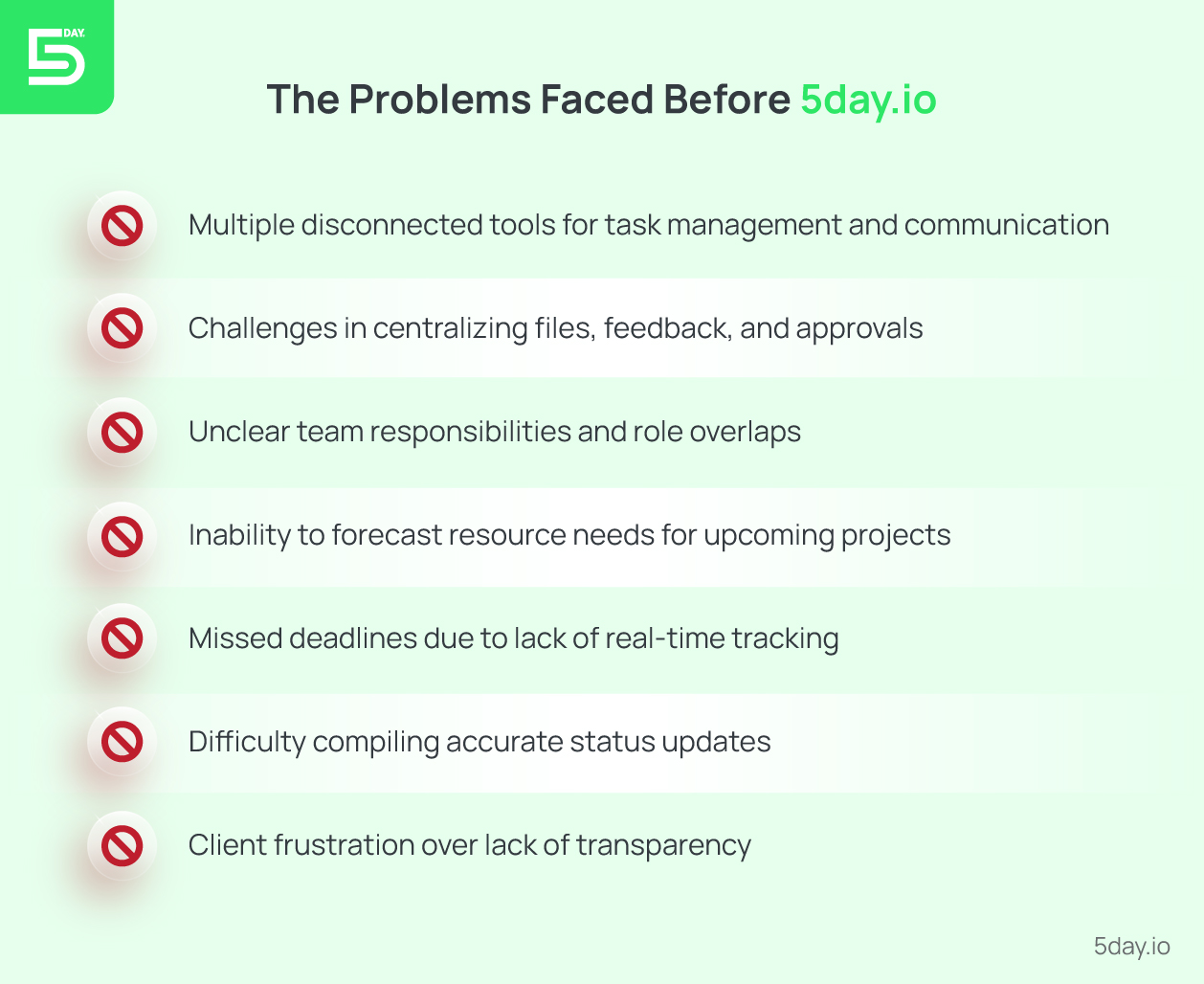
Multiple disconnected tools for task management and communication
At Koffeetech, every project was fractured. The real version of any task was never clear. Team members spent more time toggling between tools than producing meaningful work.
Read Also: How to Choose a Project Management Software?
Even a simple update meant combing through chat logs or digging through inboxes. And as projects grew more complex, stitching these fragmented systems into something coherent became overwhelming.
Challenges in centralizing files, feedback, and approvals
The creative director at Koffeetech often sighed that chasing files had become more routine than creating them. By the time the team gathered everything they needed, deadlines were dangerously close. Without a single place to keep work organized, projects that should have been simple turned into exhausting hunts.
Unclear team responsibilities and role overlaps
No one truly knew who owned what. Many critical item tasks slipped through the cracks because everyone assumed someone else was responsible.
Campaign launches stalled because of unclear ownership. When deadlines were missed, blame games took over. Instead of operating like a unified agency, Koffeetech felt like a group of loosely connected freelancers, each pulling in different directions with no clear anchor.
Inability to forecast resource needs for upcoming projects
New clients and projects came in fast, but planning for them was pure guesswork. The project managers couldn’t see the true workload of their teams. Sometimes, designers were stretched to their breaking point while copywriters had little to do. Other times, they accepted new projects without realizing the team had no bandwidth left.
Missed deadlines due to lack of real-time tracking
Without proper real-time tracking, project managers assumed progress was on track, until the delivery date revealed otherwise. More than once, they discovered at the eleventh hour that key pieces were still unfinished.
The pattern became so routine that even clients began to anticipate delays.
Difficulty compiling accurate status updates
Leaders were forced to make critical decisions based on incomplete or unreliable data, while clients received updates that felt more like guesswork. Deep down, everyone knew the reports couldn’t truly be trusted, despite the exhausting effort that went into creating them.
Client frustration over lack of transparency
Clients admired Koffeetech’s creativity, but the uncertainty wore them down. Updates came irregularly, often only after they pressed for answers. With little transparency, they felt like outsiders to their own projects, left wondering, “What’s really happening behind the scenes?”
Relationships that should have thrived on collaboration grew tense. Some clients even started looking elsewhere, seeking agencies that could offer the clarity Koffeetech struggled to provide.
How 5day.io was implemented in their workflow
Step 1: Audit of existing workflows and pain points
The first step was a sweeping audit of every team’s existing workflow. It was an immersive, top-down process that brought together project managers, team leads, and contributors for honest conversations about how work got done, and what tasks often fell through the cracks.
Using mindmaps and process diagrams, teams visually mapped out their daily routines, timesheet entries, project updates, file sharing, and approval cycles.
This phase revealed redundant manual entries in timesheets, missed deadlines due to forgotten reminders and unclear task dependencies. Teams noted frustration with having to juggle multiple tools for collaboration. They also talked about the need for advanced analytics, and documentation, to prevent unnecessary silos within the project management software for marketers.
The insights here were about understanding why things broke down, spotlighting both technical and human friction. Setting clear benchmarks for success in the upcoming deployment set a high bar for what 5day.io was expected to deliver.
Step 2: Leadership alignment and selection of internal champions
Once the audit painted a vivid picture of daily operations, leadership took center stage (and the hot seat). Executives and department heads participated in high-level alignment sessions, to champion it with gusto.
Internal champions were handpicked for their influence, and willingness to lead change. These champions, drawn from every functional area, underwent deep-dive orientation into 5day.io’s platform.
They learned its architecture inside out right from how workspaces, spaces, projects, sections, and tasks all translate into practical day-to-day workflow. Champions became power users, vetting features like permission hierarchies and custom status workflows, ensuring individual team needs weren’t drowned out by blanket company policies.
Step 3: Migrating active projects and recreating templates in 5day.io
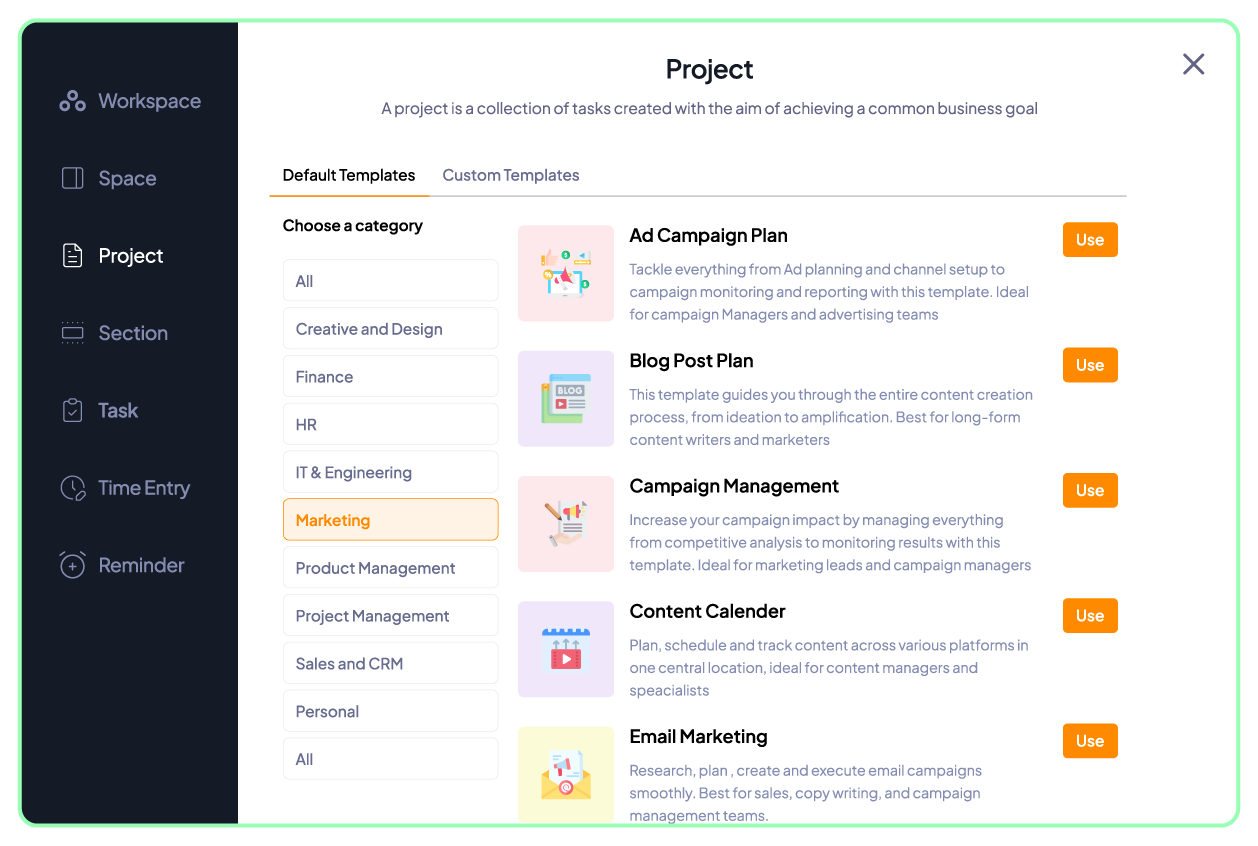
Migration was a carefully staged operation. Teams prioritized which projects moved first, leaning on critical initiatives as pilot candidates. Every task, sub task, and dependency was mapped to the platform’s rich project management architecture.
Custom fields in 5day.io recreated legacy data, so details like client association, budget type, story points, and billable status transferred intact. Templates were super useful for onboarding and scaling.
Teams digitized their best practices, creating reusable structures for task orders, sprint cycles, and reporting. Every project was given dynamic life with complete built-in analytics, and activity streams.
Automation was a breakthrough feature at this stage. Recurring tasks, and overdue notifications meant things kept ticking even if people dropped the ball. Sections and workflows were fine-tuned for flexibility, so teams could reorganize priorities without losing sight of their goals.
Step 4: Connecting calendars, storage, email, and reporting systems
5day.io’s ecosystem connectors meant organizations could unite disparate calendar apps, and file stores into a single actionable platform where files, and dates were always easy to find.
Automated reminders synced with team members’ calendars, ensuring that deadlines for today, tomorrow, and upcoming milestones all registered across devices and notification channels. Email integration turned project status updates and task comments into instant alerts, keeping every stakeholder in the loop.
Reporting capabilities soared.
Timesheets, and dashboards could be exported for meetings or audits. The setup supported a variety of formats, whether someone preferred a tabular widget, bar chart, timeline, or single-value metric, their dashboard could reflect exactly what mattered most to them.
Step 5: Setting up custom dashboards for stakeholders
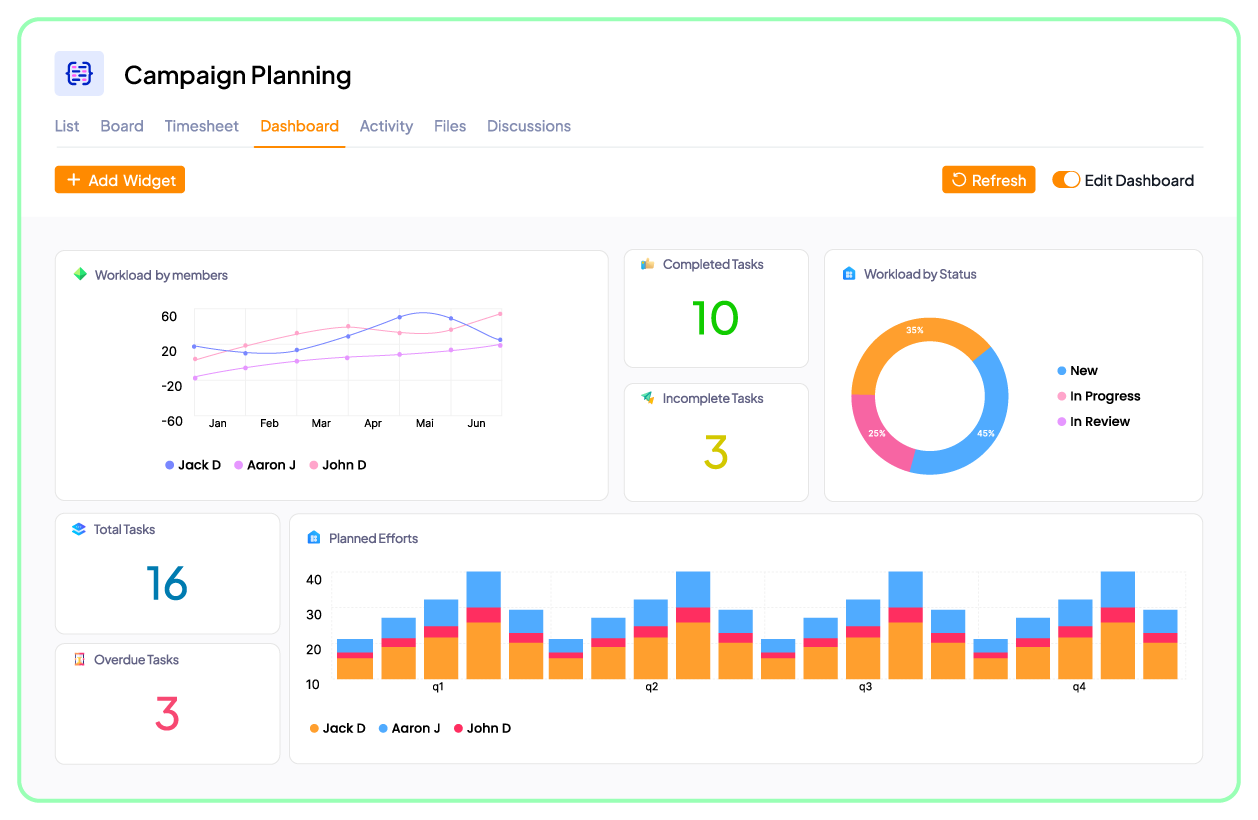
One of 5day.io’s most transformative features was the ability to craft ultra-personalized dashboards and give amazing visibility to every contributor involved. Project owners created panels that brought capacity information, billable/non-billable hour tracking, and deadlines into vivid focus, all customizable by role, priority, or project within the project management software.
Stakeholders filtered and grouped items by overdue status, progress percentage, or completion, letting them spot risks before they snowballed. Inline editing meant tweaks could be made on the fly, without leaving the dashboard.
Step 6: Gathering team input for iterative optimization
Rollout was never one-and-done. Iterative, user-driven improvement made 5day.io a living, breathing part of team culture. Champions and contributors regularly submitted feedback, right from suggesting tweaks to automation, expanding template libraries, and even requesting entirely new workflow features.
Discussions in comment threads and activity streams surfaced the subtler frictions, and how project status reporting could be distilled for busy execs.
This process made every workflow a conversation.
Step 7: Early wins and lessons from pilot projects
Pilot projects brought the transformation together. Teams tracked early wins such as shorter onboarding times thanks to pre-built templates, and real-time timesheet entries.
The granularity of user roles proved invaluable for complex client projects, while robust bulk time entry and workflow status tweaking became essential for teams working on tight deadlines.
Pilots reminded everyone that scalability and agility go hand in hand. The ability to duplicate projects and customize dashboards meant every team could tailor 5day.io to its own rhythm. These lessons made subsequent deployments smoother.
Key features that drove the transformation
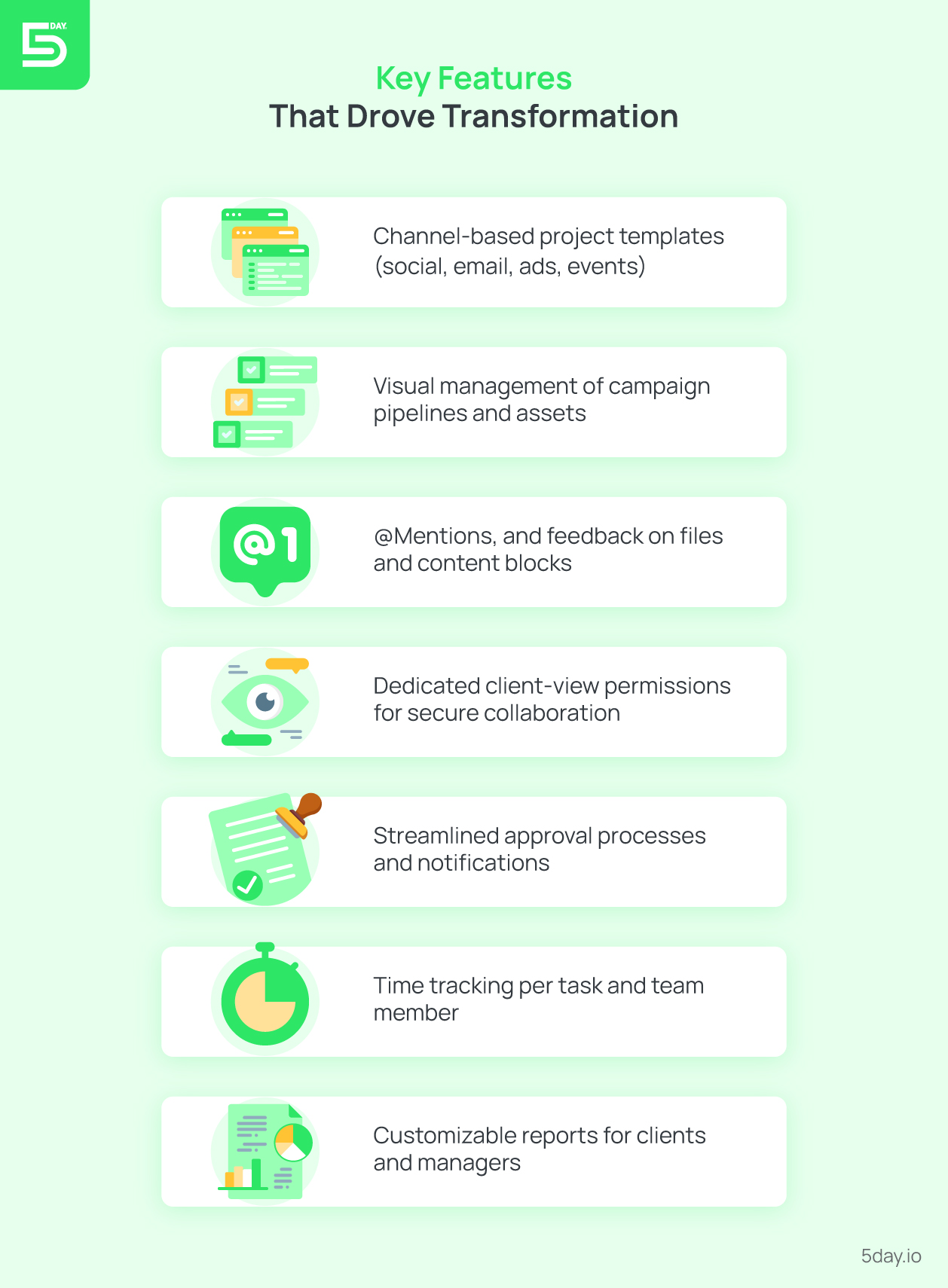
Here’s a deep dive into the platform’s game-changing capabilities and how they redefined the way modern teams collaborate and manage projects.
Channel-based project templates (social, email, ads, events)
Starting each initiative with a channel-customized template, teams could instantly access a prebuilt structure capturing unique deliverables, and timelines relevant to each campaign type.
The templates were pre-built with task types and estimation fields tailored to each stage of execution, so teams had clear guidance on what to capture and could avoid overlooking critical details. The deep integration of options for description, custom fields, tags, and multi-select dropdowns changed planning sessions from guesswork to best-practice orchestration.
Channel-specific elements were baked into each template, making every project launch repeatable.
Visual management of campaign pipelines and assets
5day.io’s visual campaign management tools enabled teams to map and oversee complex pipelines with exceptional clarity. Through List View and Board View interfaces, contributors instantly saw every stage of a campaign, from concept and design to scheduled deployment and post-campaign analytics.
Every asset (image, document, ad copy, video) was uploaded, tagged, and organized alongside its corresponding task or milestone.
Gantt timelines and activity streams delivered real-time views of progress, overdue items, sprint allocation, and asset usage. Bulk update and inline editing features meant stakeholders could adjust multiple campaign items simultaneously, organizing workflows with drag-and-drop speed.
This visual approach made it easy for everyone, from project owners to new team members, to understand what’s happening, spot blockers, and keep work moving forward.
@Mentions, and feedback on files and content blocks
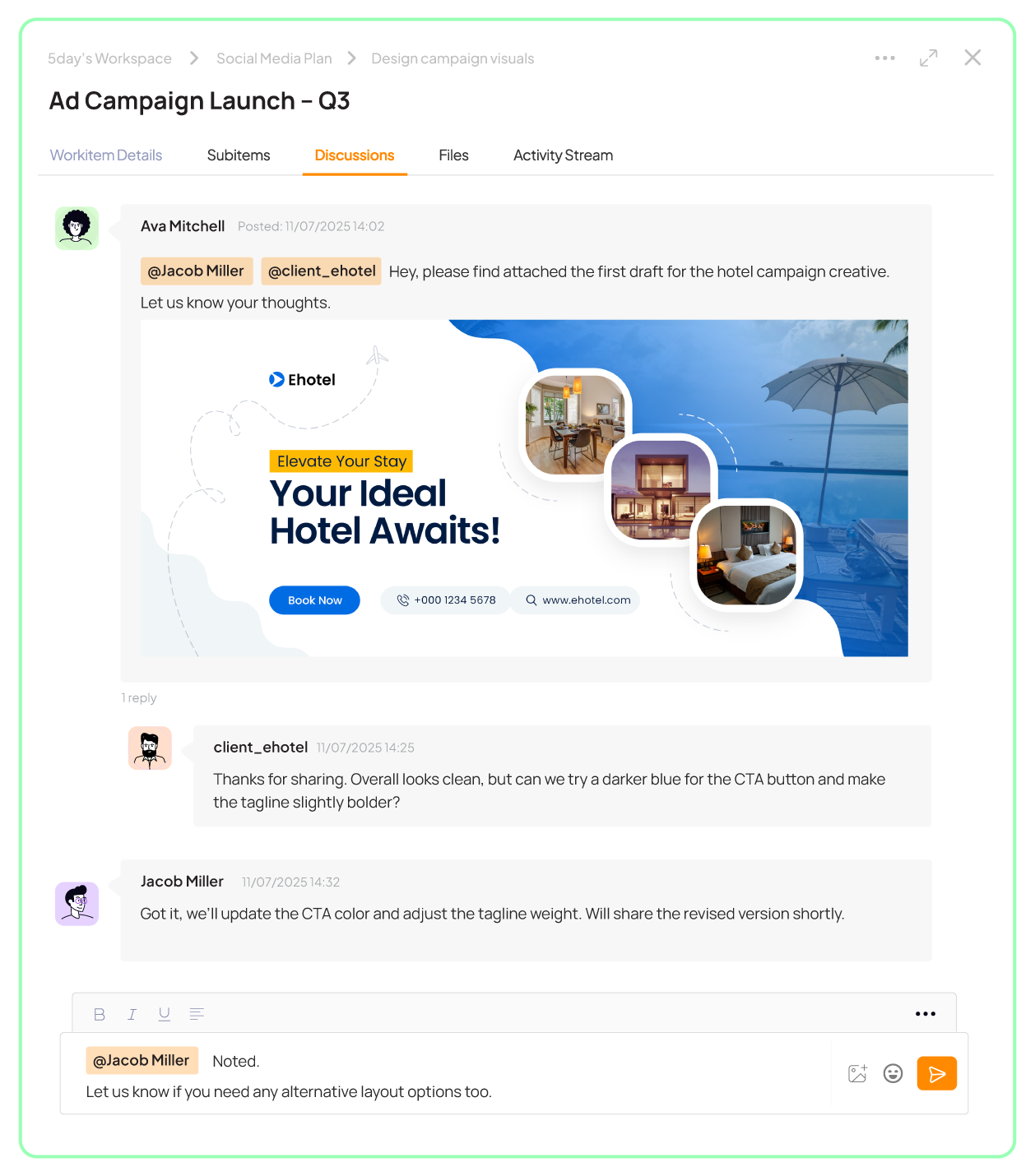
Collaboration improved thanks to @mention tagging and in-context file feedback. Anyone could quickly pull teammates or external stakeholders into discussions, drawing attention to specific tasks, files, or even comments within tasks.
The comment system supported replies, edits, and deletions, making feedback iterative and lively without losing track of context.
File uploads became canvases for feedback.
Whether reviewing a draft, image, spreadsheet, or campaign plan, contributors could add detailed commentary to ensure alignment and creative clarity. The system’s notifications kept everyone in the loop, so comments and suggested changes never went unnoticed. This level of responsive feedback tied teams together, and gave access to insights on every asset or content block.
Dedicated client-view permissions for secure collaboration
5day.io empowered teams to share selected portions of a project with clients, giving external stakeholders visibility into progress, files, and discussion threads without exposing confidential internal workflows.
Beyond standard tiers like guest, external member, and client, customizable roles and permissions let teams define their own access combinations, ensuring the right people see exactly what’s relevant without being forced into preset roles.
Clients could provide approvals, see asset status, and contribute to discussion directly within their designated view. Meanwhile, teams retained full control over what was visible and editable, mitigating risk and deepening trust with secure, transparent engagement.
This feature proved invaluable for agencies balancing open collaboration with privacy and intellectual property protection.
Streamlined approval processes and notifications
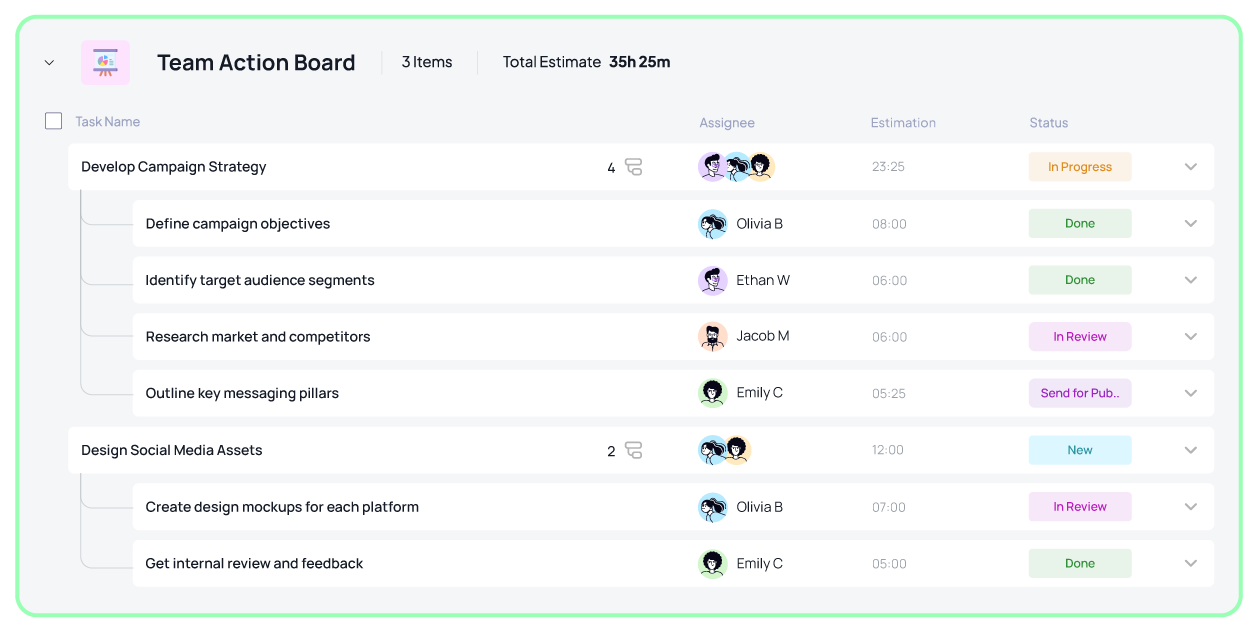
Approval cycles can make or break project momentum, and 5day.io’s streamlined workflows were a revelation. Smart notifications and reminders could be triggered by a wide range of events, everything from status updates and task completions to document changes and more.
Teams could configure when and how these alerts appeared, whether by email, mobile, or web, and tailor them to fit their own workflows.
Approval requests moved smoothly through marketing workflow optimization, while managers and clients received targeted prompts to review or sign off at every stage. The notification configuration and DND settings let users personalize when and how updates arrived, pairing peace of mind with productivity.
5day.io eliminated delays and reduced friction and helped teams to close loops faster and with less risk of oversight.
Time tracking per task and team member
Precise time tracking was woven into the fabric of every project. Whether tracking billable or non-billable hours, logging time off, or monitoring overtime, the platform provided granular insights for each task and contributor.
Users could log time individually or in bulk, see historical time logs, and leverage views organized by day, week, month, or custom period.
Built-in approval for timesheet submissions assured accountability, while capacity reports illuminated workload distribution briefly. Close observation of progress against project milestones made it possible to analyze productivity, optimize resource allocation, and ensure transparency in billing, whether for client reporting or internal reporting.
This feature drove operational fairness, data-driven planning, and much less guesswork about who did what, and when.
Customizable reports for clients and managers
Customizable analytics widgets allowed every user, from executive to client, to assemble dashboards reflecting their biggest priorities: task completion rates, deadline adherence, or resource allocation trends.
Reports could be filtered, grouped, sorted, and exported in multiple formats, ready for internal review or stakeholder presentations. Single-value metrics displayed key stats, while pie, bar, line, and tabular charts unfolded deeper stories from the data.
Teams could save their preferred views, set defaults, and pin mission-critical widgets for everyday access.
The results – improving campaign output in a few months
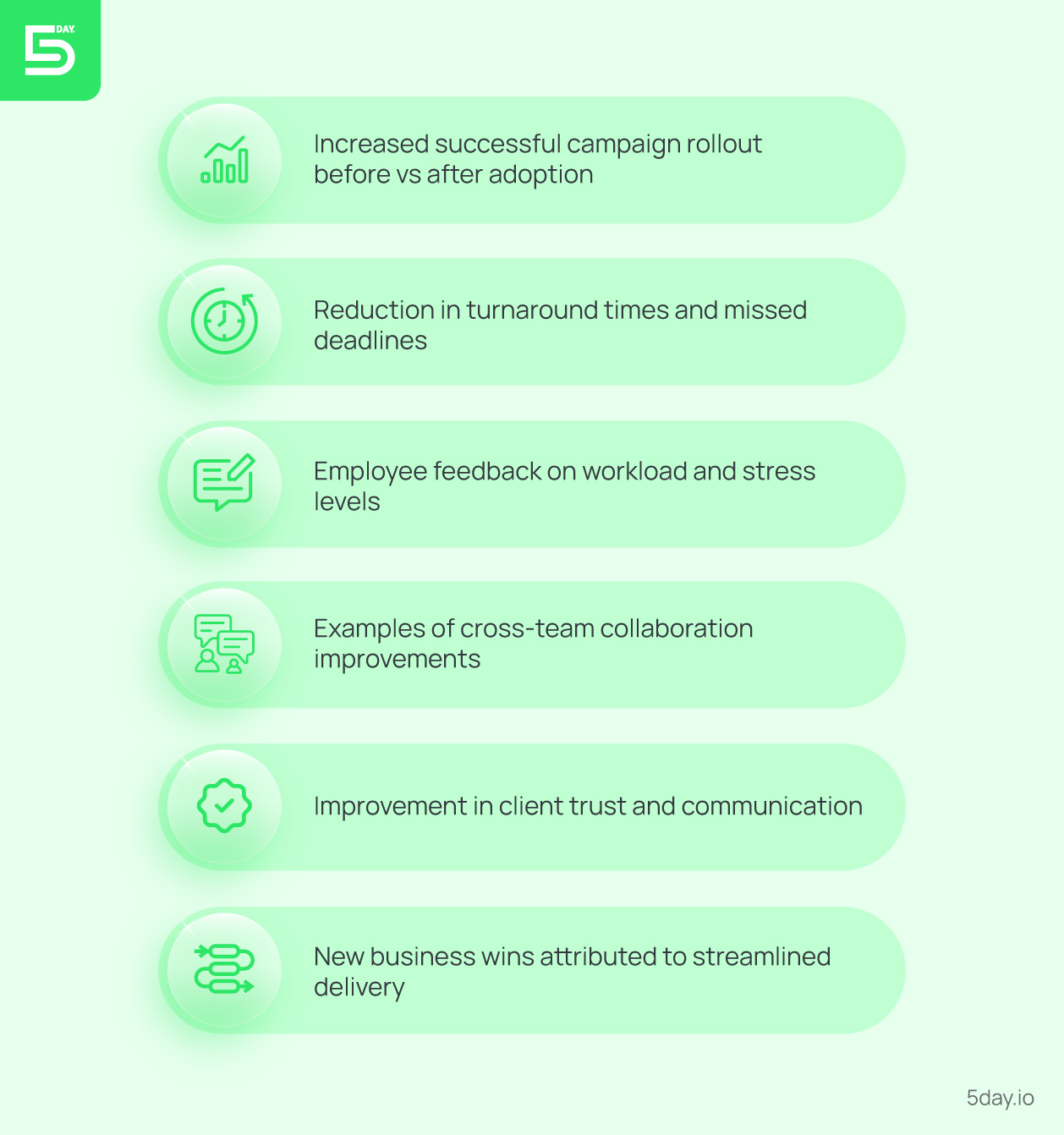
Increase in delivery of successful campaigns before vs after adoption
Following the rollout, organizations reported a remarkable doubling of campaign output within just a few months.
Where teams had previously struggled to consistently deliver a handful of successful projects per quarter, the new workflows and templates provided by 5day.io enabled a sharp ramp-up.
The platform’s structured approach, anchored in channel-based project templates, allowed teams to launch campaigns with unprecedented speed and repeatability.
A side-by-side comparison highlighted a surge in the number of successful campaigns after adoption, with many teams moving from 3–4 to 7–8 or more high-quality campaigns per month.
This uplift was about managing increased complexity without sacrificing quality or oversight. Streamlined approvals, and task-level time tracking played critical roles in maintaining this balance, preventing burnout even as output spiked.
Reduction in turnaround times and missed deadlines
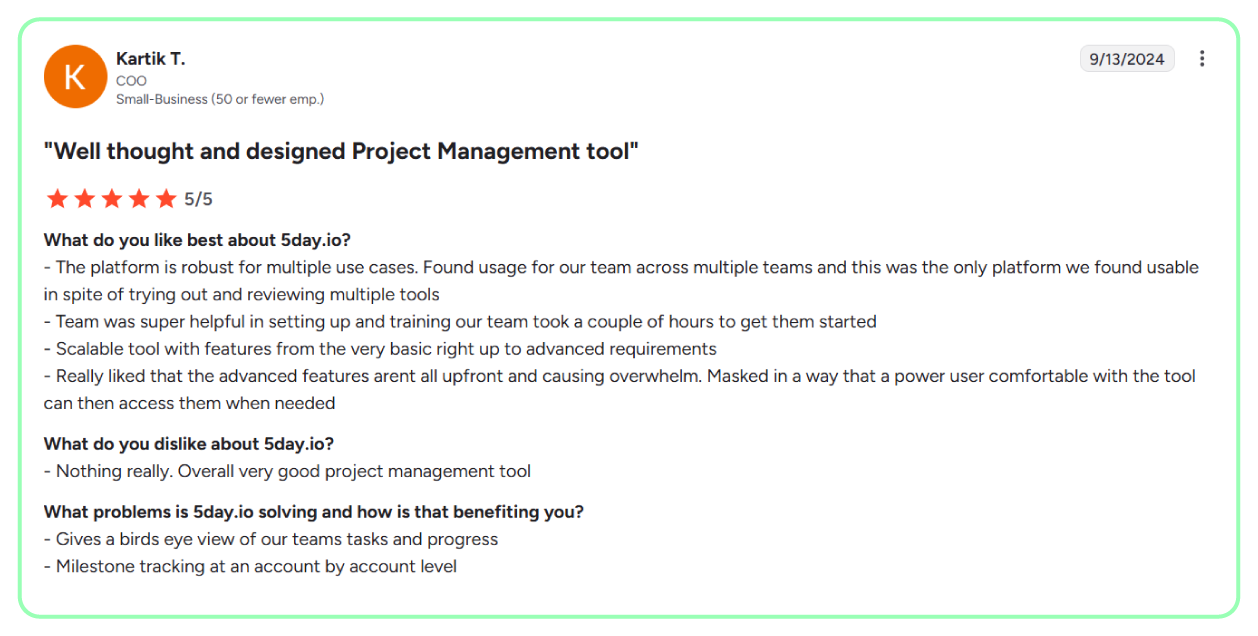
Campaign turnaround times plummeted thanks to sharper visibility and automation. Where weeks-long delays or missed deadlines had been the norm, 5day.io’s integrated calendars, reminders, and sprint status workflows reduced bottlenecks and accelerated approvals.
Teams cited an average 30%+ decrease in turnaround times, shaving days to hours in some critical processes.
Automated notifications and dedicated dashboards helped identify risks early, allowing course corrections well before a deadline was threatened. The consequence, a dramatic drop in overdue tasks, with teams reporting reductions in missed deadlines by up to 50%. This precision and predictability boosted both internal confidence and external delivery reliability.
Employee feedback on workload and stress levels
Employee surveys revealed that alongside increased output, team members experienced deliberate reductions in workload stress. The structured workflows and centralized workspaces replaced the chaos of juggling multiple disconnected tools.
Employees praised clear task ownership, real-time progress visibility, and smooth handoffs made possible by 5day.io.
The ability to log time accurately and request approvals without costly back-and-forths created a sense of fairness. Automated repetitive tasks and reminders alleviated cognitive overload.
Overall, the platform helped foster a healthier work environment where pressure was better managed and collaboration felt more supportive.
Examples of cross-team collaboration improvements
The platform’s collaborative features sparked notable improvements in cross-team cooperation.
For instance:
- Marketing and design teams seamlessly coordinated on campaign assets using file tagging and @mentions.
- Sales and project management synced timelines and client communications via shared dashboards.
- Client service and analytics teams used comment threads to clarify requirements.
Improvement in client trust and communication
Clients noticed the difference immediately. The platform’s dedicated client-view permissions and transparent reporting dashboards increased client trust, providing direct visibility into project progress.
This transparency translated into stronger relationships, with clients expressing greater confidence in meeting deadlines and deliverables.
Several organizations shared anecdotes of how the clarity and responsiveness fostered by 5day.io helped renew contracts and expanded scope with existing clients, underscoring the platform’s role as a relationship accelerator.
New business wins attributed to streamlined delivery
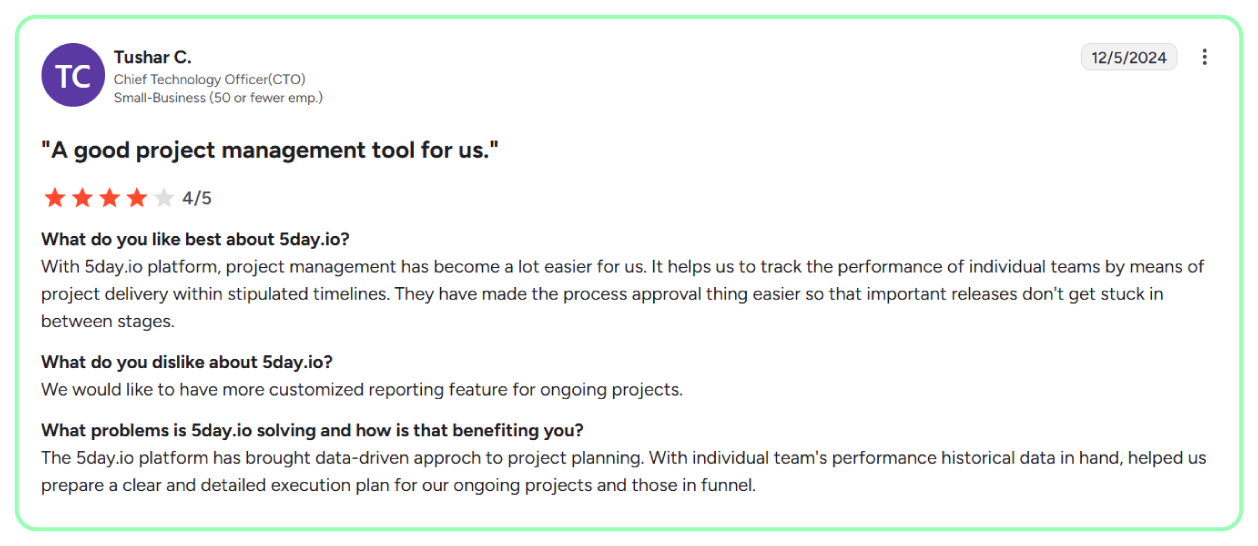
The operational efficiencies driven by 5day.io became a competitive advantage that directly influenced business growth. Streamlined delivery schedules and reliable reporting enabled sales teams to confidently pitch expanded campaigns.
Notably, multiple organizations attributed new client wins and strategic partnerships to their ability to confidently promise and deliver on accelerated timelines.
Lessons for other marketing agencies
- Centralize all marketing initiatives in one unified workspace. Organize projects into clear spaces and sections (e.g., inbound and outbound marketing), breaking down campaigns by month and assigning tasks clearly to team members.
- Customize workflows and prioritize tasks rigorously. Design tailored task types and status workflows that reflect the distinct work streams (design, SEO, content). Define clear priority levels to help teams navigate shifting stakeholder demands.
- Harness analytics to keep projects on track and promote accountability. Monitor workload distribution, task progress, and priority areas with powerful analytics.
- Use templates and past analytics to speed up project planning. Define project scopes precisely leaving no room for scope creep, learn continuously from analytics, and create reusable marketing project templates.
- Streamline creative workflows with appropriate roles and document collaboration. Assign custom access rights for managers, members, and freelancers. Integrate cloud storage to centralize asset management and feedback.
- Enable all disciplines, content, email, PPC, SEO, design to collaborate fluidly in shared spaces with clear task dependencies and real-time updates.
- Provide clients with dedicated, controlled visibility into relevant project elements, enabling timely approvals and feedback without compromising internal privacy or control.
- Enable detailed time accounting for better project costing, and billing transparency.
- Maintain ongoing communication loops to refine processes, workflows, and templates, ensuring the system evolves with team needs and market changes.
Try the tool for free for 30 days before you commit to it and see the massive difference it brings to your team and agency.
